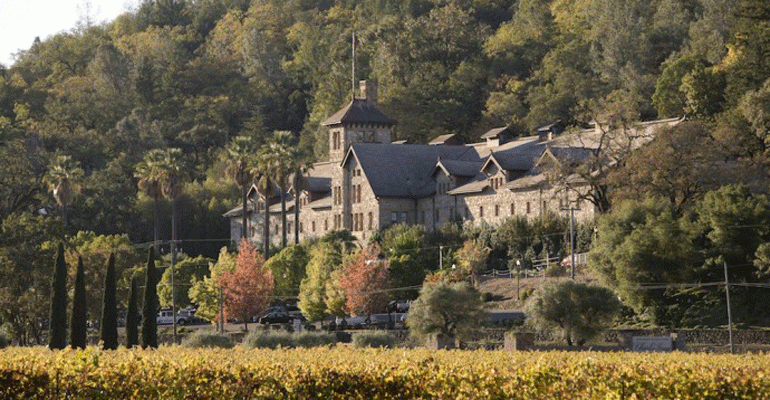The title of this year’s Worlds of Flavor conference, which is put on annually by The Culinary Institute of America in St. Helena, Calif., was Legends of Flavor. The name telegraphed both the big themes and the agenda, which featured seminal chefs like Rick Bayless and Ming Tsai, whose TV-friendly accessibility and deep knowledge of Mexican and Chinese cuisines respectively have made them gastronomic pioneers in this country. True to form, however, the program also gave voice and stage presence to chefs who have yet to acquire a media audience. They presented some developing themes of their own.
Chef Christopher Kostow is a legend in the making. His The Restaurant at Meadowood boasts three Michelin stars, and he has also received a James Beard Award for his inventive use of ingredients and his innovative technique. In his presentation, Legacy in the Age of Bright and Shiny, he defined legacy as sustained brilliance over time and lamented the continuing dirges from critics proclaiming the death of fine dining. The latter is alive and well, he maintains, citing his 10-year-old Meadowood operation as proof. This reality is obscured by the contemporary food media, which he maintains is focused relentlessly on the new, rushing from opening to opening, snapping pictures and posting with abandon. Kostow has seen the enemy, and in his estimation, it is Instagram, an innovation that “changed the game … so that now it’s all about appearance.”
Yet ugly-delicious is where it’s really at for many next-gen chefs. It’s the name of a Netflix series that stars chef David Chang and that promises “all the flavor, none of the B.S.” It’s also how chef Monique Fiso refers to the signature taro root stew that she serves in Hiakai, her pop-up concept in New Zealand. She unapologetically recreates authentic, comforting Maori and Samoan dishes, despite the fact that they don’t measure up to Instagram’s skin-deep standards.
Chef Val Cantu’s lauded Californios restaurant in San Francisco seeks to elevate diners’ perceptions of Mexican food with multi-course tasting menus. Their elevated price points led him to invest in elegant porcelain dinnerware, but he subsequently 86ed it in favor of plain black plates. He told attendees that he is willing to sacrifice appearance as he strives to make sure that the food is truly the star of the show.
It’s as much about inputs as outputs. A strong unifying undercurrent running throughout the program was a commitment to nurturing the environment by going back to basics and protecting indigenous foodstuffs. Chef Ton Thitid, chef-owner of Le De in Bangkok, believes that this ethic, which values native ingredients and the farmers who produce them, is what unites emerging chefs worldwide. While he thinks that cuisine is a living thing that must evolve to endure, its survival must be predicated on respecting and protecting its sources.
Chef Manoella Buffara, who operates Manu in Curitiba, Brazil, seconds that belief. She is committed to honoring artisanal products of all types in her state of Paraná, where she takes advantage of a mind-boggling 63 different breeds of local bees. Each produces a subtly different honey based on location of the hive, nearby vegetation and so on, and she matches those specific flavor profiles to particular dishes on her menu.
A lot has changed in the past two decades. As the conference celebrated its 20th anniversary this year, some speakers noted how ethnic cuisine in the United States has evolved since 1998. Bayless, for example, spoke of the complexity of making Mexican adobo sauce back in the day, an hours-long exertion that required tracking down specific dried chiles, a typically formidable and sometimes fruitless task, followed by a lengthy preparation process that included soaking and cooking and blending and straining. Creating adobo now is a snap thanks to the ready availability of ground spices and the microwave oven.
What about the next 20 years? Like a number of others on the program, Shinobu Namae has worked for French chef Michel Bras, whose philosophy of “cuisine du terroir” has influenced a generation of young culinarians. Namae’s dedication to Bras’ principles has netted two Michelin stars for his L’Effervescence in Tokyo. He described his vision of the post-globalization kitchen as “locally driven, seasonally connected, logically delicious, historically rooted and environmentally friendly.” And he brought those principles to life with a simple, sophisticated beef carpaccio with smoked-mussel purée and sake kasu cream. It’s an effortless blending of East and West that will redefine the notion of fusion cuisine in the 21st century.
Nancy Kruse, President of the Kruse Company, is a menu trends analyst based in Atlanta. As one of LinkedIn’s Top 100 Influencers in the US, she blogs regularly on food-related subjects on the LinkedIn website.

